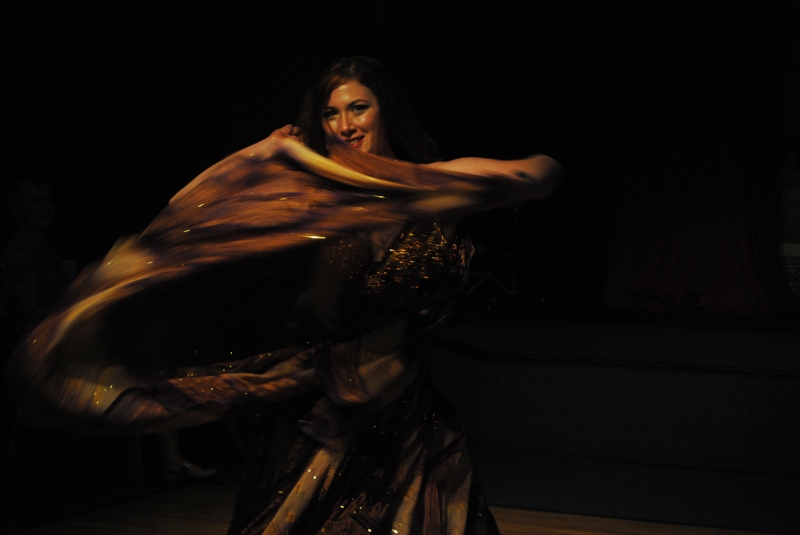
I’m a tribal dancer; that’s how I identify best. However, I only call myself a tribal dancer because that’s what I love; not because I only dance tribal style.
Last year I began exploring belly dance outside of tribal. It started with a very intimidating workshop with Luna of Cairo, and I was thrown out of my tribal nest.
Here are the hardest things I’ve found about transitioning between modern Egyptian and Tribal style.
1. Posture: Tribal style is characterized by bent knees, elevated chest and high elbows. Modern Egyptian on the other hand is straight legs, “boobs over toes and elbows down.
2. Legs: Knees are together and legs are straight in modern Egyptian; an almost illegal form in Tribal style.
3. Feet: Tribal style is almost always flat footed, while modern Egyptian is frequently danced on your toes in relevé.
4. Arms: The arms in modern Egyptian are soft and delicate; tribal style however uses strong arms inspired by flamenco dance.
5. Costume malfunction: As a tribal dancer I’m used to always wearing pants; Egyptian costumes are not that dancer friendly. Most Egyptian costumes have one or two side slits that require delicate maneuvering. You don’t want to step the wrong way and have your dance become a different type of show.
6. Egyptian Music: Egyptian music is in Egyptian. I don’t speak Egyptian. I feel like that speaks for itself.
7. Arm undulations: Arm undulations is a move in tribal style commonly used in slow songs. Such a move does not exist in Egyptian; this is something I fail to remember.
8. Camel vs. camel: There is a move called a camel in Egyptian, and a move called a camel walk in American Tribal Style. I always seem to confuse the two.
9. Smile: Egyptian dancers tend to flash giant smiles during their audience interaction. In American Tribal Style it is encouraged to keep a closed mouth smile. I am good at neither of theses smiles.
10. Authenticity: Tribal style is very new, and very American. Egyptian, on the other hand, has centuries of background and history. You need to know your history if you are to perform Egyptian dance; otherwise the authenticity police will get you.
Are you a dancer who switches between styles? What are your largest difficulties.